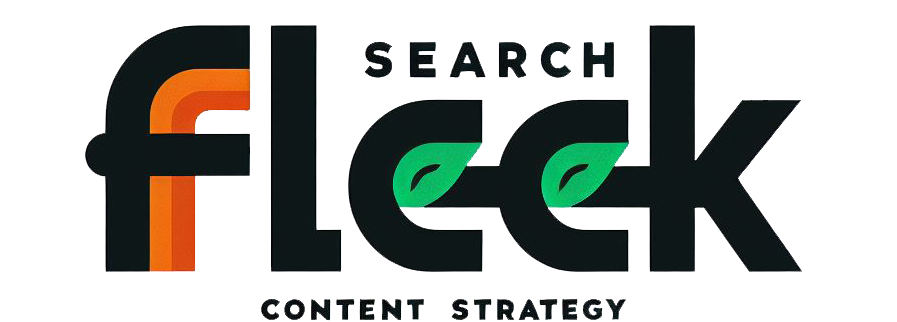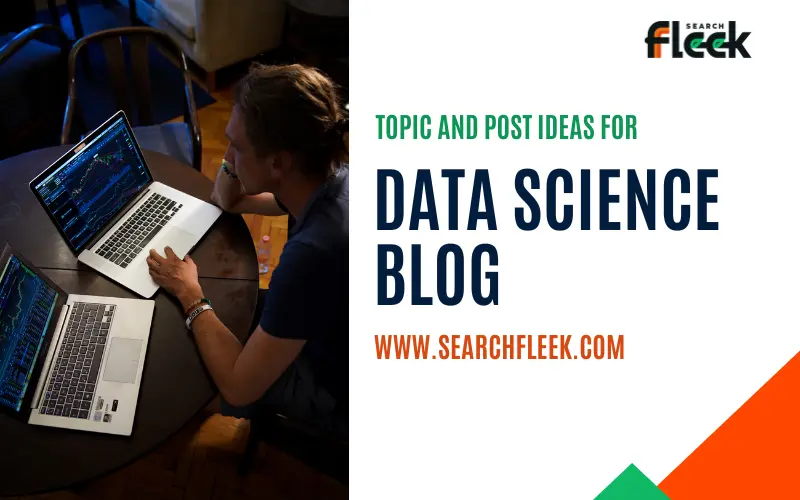The world is awash in data, and data scientists are the wizards who unlock its secrets! But even the most skilled data whizzes can sometimes struggle with content creation. Fear not, fellow data enthusiasts! This comprehensive list of 35 data science blog ideas will spark your creativity and equip you to craft captivating content that educates, inspires, and engages your audience. Buckle up and get ready to explore diverse topics that showcase your data prowess:
Data Science Blog Topic Ideas
Data Science Fundamentals & Techniques
- Demystifying Data Cleaning: Wrangling Messy Data into Submission: Guide readers through the crucial process of data cleaning. Discuss techniques for handling missing values, outliers, inconsistencies, and data normalization.
- Exploratory Data Analysis (EDA): Unveiling Hidden Stories from Your Data: Explain the importance of EDA in data science. Provide practical steps for data exploration, including visualization techniques and identifying patterns and trends within datasets.
- Statistical Thinking for Data Scientists: Equip your readers with a solid foundation in statistical concepts. Discuss central tendency, dispersion, hypothesis testing, correlation, and their application in data analysis.
- Machine Learning Demystified: Algorithms Unveiling Patterns: Break down basic machine learning concepts in a clear and concise manner. Explore different types of algorithms (supervised, unsupervised, reinforcement learning) and their practical use cases.
- Data Visualization Essentials: Telling Compelling Stories with Data: Highlight the power of data visualization in storytelling. Discuss visualization best practices, common chart types, and tools for creating stunning and informative data visualizations.
Deep Learning & Advanced Techniques
- The Power of Deep Learning: Neural Networks Unveiling Complex Patterns: Introduce your audience to the world of deep learning. Explain artificial neural networks, their architecture, popular deep learning frameworks (TensorFlow, PyTorch), and applications.
- Natural Language Processing (NLP) in Action: Making Sense of Text Data: Explore the exciting field of NLP. Discuss techniques for text processing, sentiment analysis, topic modeling, and building chatbots or language translation applications.
- Time Series Analysis: Predicting Trends and Patterns over Time: Equip readers with skills for analyzing time series data. Discuss forecasting techniques like ARIMA models, Prophet, and their use cases in predicting future trends.
- Recommendation Systems: Powering Up Your User Experience: Unpack the science behind recommendation systems. Explain collaborative filtering, content-based filtering, and hybrid approaches that personalize user experiences on platforms like Netflix or Amazon.
- Dimensionality Reduction Techniques: Making Complex Data Manageable: Discuss dimensionality reduction techniques like PCA (Principal Component Analysis) and their role in simplifying high-dimensional data for better analysis and visualization.
Data Science Tools & Technologies
- Mastering Python for Data Science: From Beginner to Power User: Guide aspiring data scientists through the essentials of Python for data manipulation, analysis, and machine learning. Showcase libraries like NumPy, Pandas, Matplotlib, and Scikit-learn.
- Leveraging SQL for Data Wrangling: Mastering Databases for Data Extraction: Highlight the importance of SQL (Structured Query Language) for data professionals. Demonstrate how to write effective SQL queries for data retrieval, filtering, and manipulation.
- Big Data Technologies: Taming the Data Deluge: Introduce readers to big data technologies like Hadoop and Spark. Discuss frameworks for processing and analyzing massive datasets that traditional methods cannot handle.
- Cloud Computing for Data Science: Scalable Resources for Your Projects: Discuss the benefits of cloud computing for data science projects. Explore cloud platforms like AWS, Azure, and GCP, and their services for data storage, processing, and analysis.
- Version Control with Git: Collaboration and Reproducibility for Data Scientists: Emphasize the importance of using Git for version control and collaboration in data science projects. Demonstrate how to manage and track code changes, collaborate effectively on data analysis tasks, and ensure project reproducibility.
Data Science in Action: Real-World Applications
- Data Science for Finance: Predicting Market Trends and Managing Risk: Explore how data science is used in finance. Discuss applications like algorithmic trading, fraud detection, and credit risk assessment.
- Data Science for Healthcare: Revolutionizing Diagnostics and Treatment: Highlight the transformative impact of data science in healthcare. Discuss applications like predicting disease outbreaks, personalized medicine, and drug discovery.
- Data Science for Marketing: Targeting Customers and Boosting Sales: Explore the use of data science in marketing campaigns. Discuss customer segmentation, personalization techniques, and predicting customer behavior for targeted marketing strategies.
- Data Science for Social Good: Tackling Global Challenges: Showcase the power of data science in tackling social issues. Discuss applications in areas like climate change analysis, poverty reduction, and promoting
- Building a Data Science Portfolio: Showcase Your Skills and Land Your Dream Job: Equip aspiring data scientists with strategies for building a compelling portfolio to showcase their skills to potential employers.
Data Science Career & Growth
- Landing Your Dream Data Science Job: Resume & Interview Tips: Offer data science job seekers valuable advice on crafting data-driven resumes that highlight relevant skills and experiences. Prepare them for technical interviews with common data science questions and problem-solving strategies.
- Freelancing for Data Scientists: Building Your Client Base: Guide data scientists interested in freelancing through the process of finding clients, setting competitive rates, and managing projects effectively.
- Staying Relevant in the Evolving Data Science Landscape: Discuss the ever-changing nature of the data science field. Encourage continuous learning through online courses, attending conferences, and keeping up with the latest advancements in algorithms, tools, and methodologies.
- Building a Strong Data Science Network: Connecting with the Community: Promote the value of networking for data scientists. Discuss platforms like LinkedIn, online forums, and attending meetups to connect with other professionals, share knowledge, and collaborate on projects.
- Open Source Contribution in Data Science: Giving Back to the Community: Highlight the importance of open-source contribution in data science. Guide readers through the process of finding suitable projects, contributing code, and collaborating with open-source communities.
Engaging Content Formats for Data Science Blogs
- Data Science Challenges & Competitions: Challenge your audience with real-world data science problems and competitions. Provide datasets and encourage readers to submit their solutions, fostering engagement and showcasing their problem-solving skills.
- Case Studies: Unveiling the “How” Behind Successful Data Science Projects: Share in-depth case studies that showcase successful data science projects across different industries. Discuss the challenges faced, methodologies employed, and the impact of the project’s outcomes.
- Data Science Book Reviews & Resource Recommendations: Review data science books, online courses, or other learning resources. Share your insights on their effectiveness, target audience, and suitability for different skill levels.
- Industry News & Analysis: Decoding the Latest Trends in Data Science: Keep your readers informed by discussing recent advancements and trends in the world of data science. Analyze emerging technologies, their potential impact on the field, and ethical considerations involved in data analysis.
- Data Science Humor: Injecting Fun into the Analytical World: Lighten the mood with data science-themed humor. Share funny memes, relatable coding experiences, or lighthearted anecdotes to connect with your audience on a deeper level.
Inspiring & Thought-Provoking Content
- The Ethical Landscape of Data Science: Using Data Power Responsibly: Address the ethical considerations in data science. Discuss topics like data privacy, bias in algorithms, and responsible data collection practices.
- The Future of Data Science: What Lies Ahead?: Explore the future of data science. Discuss emerging trends like artificial general intelligence (AGI), explainable AI (XAI), and the potential impact of data science on various aspects of human life.
- Data for Good: Showcasing Data Science Projects with Positive Impact: Highlight data science projects that contribute to social well-being and solve global challenges. Inspire your audience to explore how their data skills can be used for positive change.
- Data Science Through the Lens of History: A Journey of Evolution: Take your readers on a historical journey through the evolution of data science. Discuss how data analysis techniques have changed over time, and highlight the contributions of key historical figures in the field.
- Data Science Beyond the Code: The Human Element in Data Analysis: Emphasize the importance of soft skills in data science. Discuss the role of communication, storytelling, critical thinking, and collaboration in successful data science projects.
What to Look Before Selecting Right Blog Topics for Data Science Blog
Choosing the right topics for your data science blog requires careful consideration. Here are some key factors to keep in mind:
Your Expertise:
Focus on areas where you possess strong knowledge and practical experience. Your passion and in-depth understanding will translate into engaging and informative content.
Target Audience:
Identify your ideal reader. Are you catering to aspiring data scientists, experienced professionals, or a specific niche within the data science industry? Tailor your topics to their interests and skill levels.
Content Gap:
Research existing content in your chosen niche. Identify gaps in knowledge or areas where you can offer a unique perspective or fresh insights.
Finding Your Data Science Blog Niche and Building an Audience
Similar to other blogging domains, establishing a niche for your data science blog offers significant advantages:
- Standing Out in the Crowd: A well-defined niche allows you to carve out your own space in the vast blogosphere. You’ll attract a dedicated audience interested in your unique area of expertise within the data science field.
- Content Consistency: A niche provides clear direction for your blog. You can create a steady flow of content within a specific theme, establishing yourself as a reliable source of information in your chosen data science niche.
- Building a Community: Focusing on a niche fosters a sense of community. Your readers will connect with like-minded individuals, generating discussions and building a space for interaction and collaboration around their shared interest in data science.
Here are some tips for identifying your data science blog niche:
Explore your interests:
What areas of data science excite you the most? Are there specific industries (healthcare, finance) or applications (natural language processing, deep learning) you’re passionate about?
Identify your strengths:
What makes you unique? Do you have experience with specific data science tools, programming languages, or methodologies?
Market research:
Research existing blogs within your chosen niche. Analyze their content, see what’s missing, and find your own unique angle to attract new readers.
Start broad, then narrow down:
Begin by exploring a broader area of data science you’re passionate about, then identify a specific sub-niche that ignites your passion and allows you to provide deeper insights.
Frequently Asked Questions (FAQ)
There’s no one-size-fits-all answer. Consistency is key, but aim for a realistic schedule that allows you to create high-quality, informative content. Start with once or twice a week, analyze your audience engagement, and adjust based on your available time and resources.
Popular platforms like WordPress, Blogger, and dedicated data science platforms like towardsdatascience.com offer user-friendly interfaces and features specifically catered to data professionals. Consider factors like ease of use, customization options, integration with code-sharing platforms (e.g., GitHub) and data visualization tools before making your choice.
Utilize social media platforms like LinkedIn, Twitter, and data science communities (e.g., Kaggle forums) to share your blog content and engage with fellow data enthusiasts. Utilize relevant hashtags, participate in discussions, and contribute to open-source projects to build your reputation within the community.
Be mindful of copyright law. Always credit your sources properly when referencing existing data, code snippets, or content. If unsure, consult Creative Commons resources for royalty-free content and open-source data repositories.
Monetization can be an exciting opportunity, however, focus on building your audience and establishing your voice first. There are various monetization options like display ads, affiliate marketing, or offering premium content like courses or ebooks. Research these options carefully and ensure they align with your blog’s goals and target audience.
Conclusion
The exciting world of data science awaits! With this comprehensive list of 35 engaging blog ideas, valuable niche-finding tips, and insights on building a community, you’re well-equipped to embark on your data science blogging journey. Remember, the most successful data science blogs are built on a foundation of passion, knowledge, and a commitment to sharing valuable information with the data science community. Don’t be afraid to experiment, find your unique voice, and keep learning.
Ready to take your data science blog to the next level? We offer free blogging consultations! Contact us today and let our experts help you craft a compelling content strategy, attract a dedicated audience, and establish yourself as a thought leader in the data science world. Let’s turn your passion for data into a thriving online presence!
Emon Anam, CEO of Search Fleek, isn't your typical digital guru. He brings a unique blend of financial expertise (former banking pro!) and digital marketing mastery to the table. A self-proclaimed "SEO Sherlock Holmes," Emon unlocks content secrets for local businesses and SaaS companies. But beyond the keyboard, he's a devoted family man, music enthusiast, and cricket champion. Let Emon weave your digital success story!
AI Writing Disclaimer
This post was initially researched and outlined by me. The content was then generated by an AI language model using the provided information. The final text has been reviewed and edited by me for accuracy and clarity.




